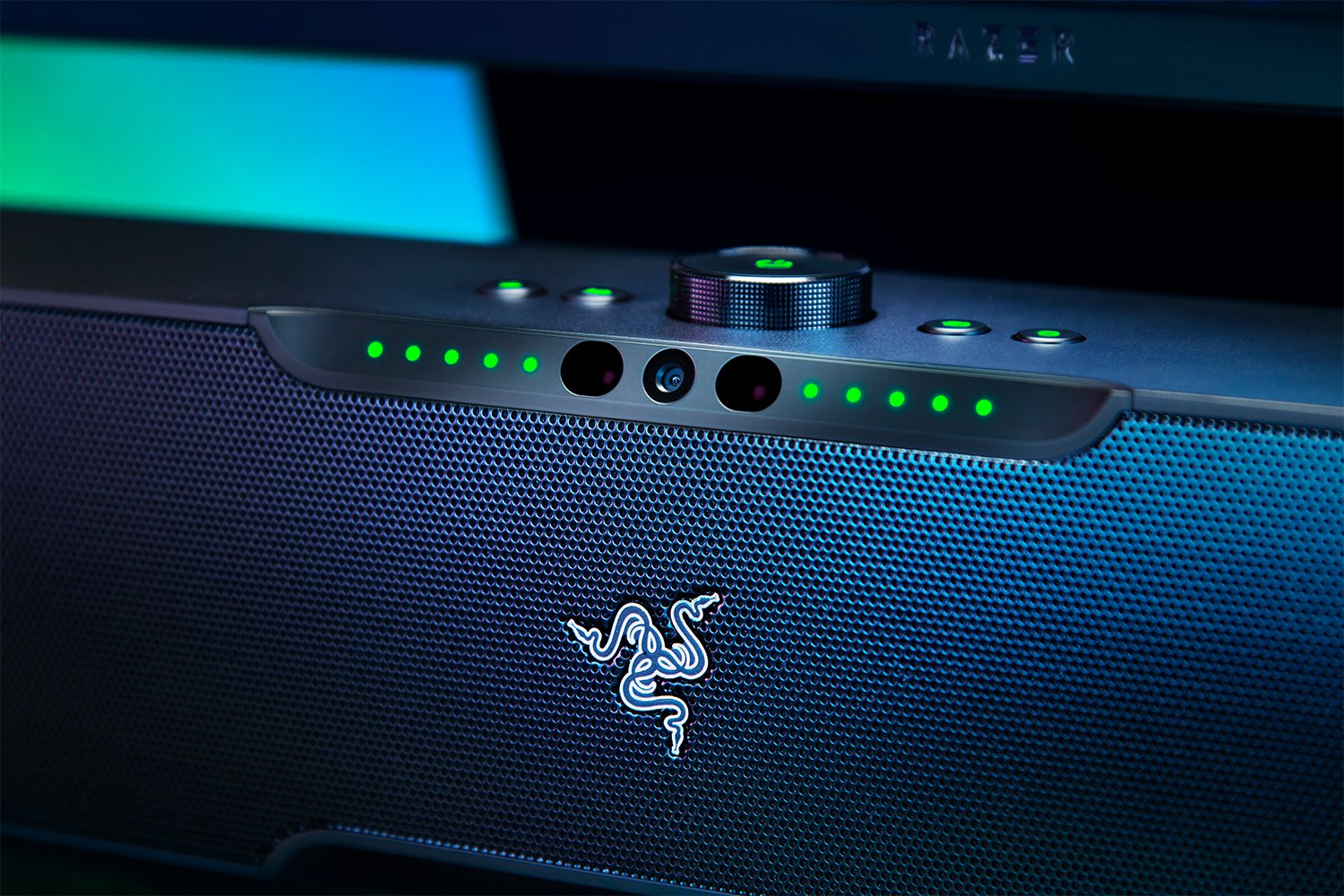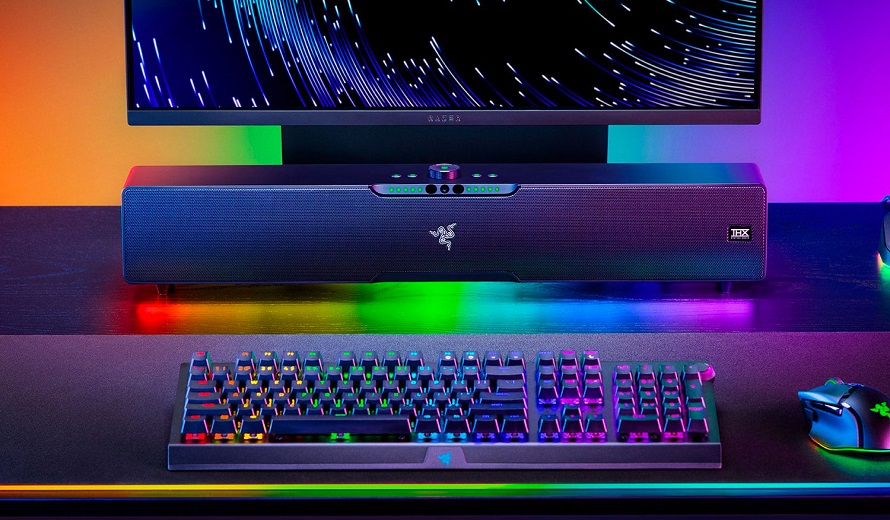The Razer Leviathan V2 Pro Soundbar Impressions
Last year I was fortunate enough to check out Razer’s Leviathan V2 soundbar. At the time, I was blown away. That sucker packed a serious punch. The sound was fantastic and its subwoofer rattled all the trinkets on my desk. It was and remains an impressive soundbar, perfectly ideal for gamers looking to boost their PC sound game. Over the past couple of weeks, I am once again lucky enough to check out Razer’s Leviathan V2 Pro soundbar, and just like its predecessor, the Pro version is outstanding. If you’re looking to ditch that old headset or your shitty computer speakers, the Leviathan V2 Pro is an incredibly good option.
I have to admit, initially, I was a little puzzled why Razer would release another soundbar less than a year after the Leviathan V2 launch. I mean, it’s a great soundbar, why do we need another so soon? Well, the Pro version isn’t just any old soundbar. It’s the world’s first beamforming soundbar with advanced AI head-tracking and it’s pretty f**cking cool.
I know, it sounds fancy and at first, I thought it was just another way of marketing the soundbar. But it isn’t. This thing is legit.
So how does a beamforming soundbar with head-tracking AI work? It’s kinda wild as Razer’s head-tracking AI technology with its integrated IR camera beams audio directly to your ears. The soundbar’s camera essentially detects where your ears are located, regardless of lighting, creating a sweet spot where you get precise surround sound. It’s almost like wearing a headset. The result is fantastic as the sound is awesome.

Setting it all up is crazy easy. Within a matter of minutes, I had the subwoofer and soundbar hooked up and running. Granted, unlike its predecessor both the subwoofer and the soundbar need to be plugged into power outlets. This is surprising as you don’t have to do this with the base model. But I guess it’s not all that shocking when you consider how great both the sub and soundbar sound. Naturally, great-sounding speakers require more juice. Do I wish they were wireless? Sure, but that isn’t an option at this time.
The soundbar and subwoofer are slightly bigger this time around, so it takes up a little more space on my desk. Yet that didn’t bother me. The extra real estate is a small sacrifice for a super-sounding soundbar.
The Razer Leviathan V2 Pro costs around $399.99 USD. That is certainly pricey and significantly more than the $249.99 USD last year’s version costs. If you already own a Leviathan, you really don’t need to rush out and pick up the Pro quite yet. You can ride it out for another year or two. But if you want the best gaming soundbar on the planet, then you’ll need to buck up if you want the Pro. It’s worth it.

There are several settings at your disposal. There is a setting for music, gaming, and movies. You can also customize EQ settings on Razer Synapse. This is all standard stuff but the game changer rests within the 3D audio settings. I mainly set the soundbar on ‘THX Spatial Audio Virtual Headset’ mode, as I found this was the best sounding mode. I didn’t mind the ‘THX Spatial Audio Virtual Speakers’ mode but it just didn’t have the punchy bass that the ‘Virtual Headset’ mode offered. I loved how I didn’t have to adjust these settings within an app either. Sure, in order to take advantage of all the soundbar features you’ll want to download the Razer Synapse app but it’s nice you can adjust everything using the buttons on the actual soundbar. I will say; however, I do wish the different settings were labeled on the bar, somehow. Having to look up the manual for the different settings was a bit of a nuisance.
Regardless, the audio is crisp. It’s got clear treble with rich lows, and the bass booms, especially in Game mode paired with Virtual Headset mode. Even while listening to music, I found myself leaving it on Game and THX Spacial Audio Virtual Headset mode. That seemed to be the sweet spot for me.
I don’t mind wearing a headset while gaming but having the option to set it aside and play with the soundbar on is great. Playing Call of Duty, for instance, sounds amazing. Gunshots pack a serious punch and you can hear every little footstep. It’s quite remarkable as it feels like the sound is wrapping right around your head. The drivers, tweeters, radiators, and subwoofer all deliver crystal-clear sounds. It’s impressive. Granted, I do wish I could adjust the bass on the subwoofer itself but unfortunately, that is not an option. Regardless, you still have plenty of options when it comes to various listening modes.
The soundbar has exceeded all my expectations but, I am not going to lie, it absolutely sucks it doesn’t have an HDMI connection. I would love to plug this bad boy into my TV. I prefer watching movies in the comfort of my living room, not on my PC. So the lack of an HDMI connection is a bummer. The lack of an optical input is a letdown too, but it does have a 3.5mm input for connecting your favorite headphones which is a nice little addition. The Pro version also has low latency Bluetooth connection, which is great for listening to your favorite podcast or Spotify. For the past couple of weeks, I’ve been listening to music non-stop on the soundbar and I’m loving it.

The customizable RGB lighting on the soundbar looks great as well. It’s not over the top or distracting at all. The lights are located just below the soundbar, so it’s subtle and looks slick. All the lights are controlled with not only Synapse but the Chroma RGB app via Bluetooth connectivity. If you love customizing your RGB lighting, Razer always has you covered.
The Razer Leviathan V2 Pro soundbar is without question a badass soundbar. Once again, Razer has outdone itself by delivering a soundbar that PC gamers will fall in love with. Sure, it’s expensive and I wish it had HDMI connectivity, but the beamforming technology is impressive resulting in an audio experience that is second to none. If you are looking to ditch your headset or you’re craving an unmatched immersive audio experience then look no further. The Leviathan V2 Pro is simply fabulous.
***The product was provided to COGconnected for the purpose of this article***